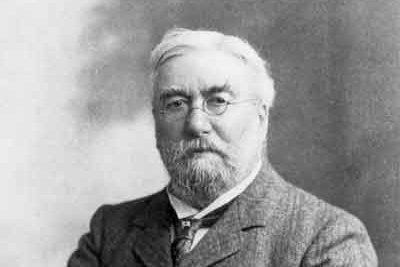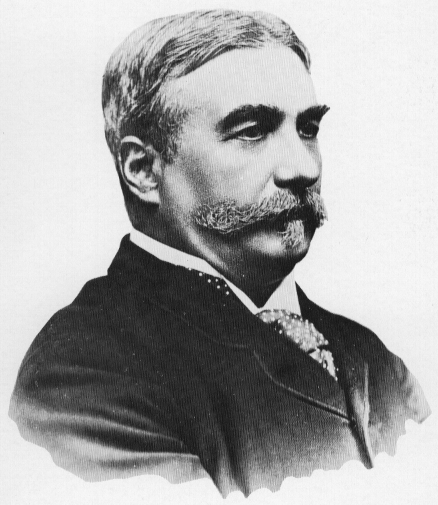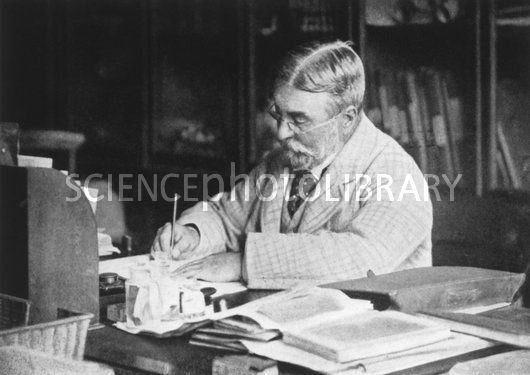Nationality British | Role Astronomer Name Norman Lockyer | |
 | ||
Born 17 May 1836Rugby, Warwickshire, England ( 1836-05-17 ) Books The dawn of astronomy, Stonehenge and Other British St, Studies in Spectrum Analysis, Elements of Astronomy, Tennyson - as a Student a | ||
History book review dawn of astronomy by j norman lockyer
Sir Joseph Norman Lockyer, KCB FRS (17 May 1836 – 16 August 1920), known simply as Norman Lockyer, was an English scientist and astronomer. Along with the French scientist Pierre Janssen he is credited with discovering the gas helium. Lockyer also is remembered for being the founder and first editor of the influential journal Nature.
Contents
- History book review dawn of astronomy by j norman lockyer
- Norman lockyer observatory
- Biography
- Publications
- Honours and awards
- References

Norman lockyer observatory
Biography

Lockyer was born in Rugby, Warwickshire. After a conventional schooling supplemented by travel in Switzerland and France, he worked for some years as a civil servant in the British War office. He settled in Wimbledon, South London after marrying Winifred James. He was a keen amateur astronomer with a particular interest in the Sun. In 1885 he became the world's first professor of astronomical physics at the Royal College of Science, South Kensington, now part of Imperial College. At the college, the Solar Physics Observatory was built for him and here he directed research until 1913.

In the 1860s Lockyer became fascinated by electromagnetic spectroscopy as an analytical tool for determining the composition of heavenly bodies. He conducted his research from his new home in West Hampstead, with a 6¼ inch telescope which he had already used in Wimbledon.
In 1868 a prominent yellow line was observed in a spectrum taken near the edge of the Sun. With a wavelength of about 588 nm, slightly less than the so-called "D" lines of sodium. the line could not be explained as due to any material known at the time, and so it was suggested by Lockyer, after he had observed it from London, that the yellow line was caused by an unknown solar element. He named this element helium after the Greek word 'Helios' meaning 'sun'. An observation of the new yellow line had been made earlier by Janssen at the 18 August 1868 solar eclipse, and because their papers reached the French academy on the same day, he and Lockyer usually are awarded joint credit for helium's discovery. Terrestrial helium was found about 27 years later by the Scottish chemist William Ramsay. In his work on the identification of helium, Lockyer collaborated with the noted chemist Edward Frankland.
To facilitate the transmission of ideas between scientific disciplines, Lockyer established the general science journal Nature in 1869. He remained its editor until shortly before his death.
Lockyer led eight expeditions to observe solar eclipses for example in 1870 to Sicily, 1871 to India and 1898 to India.
Lockyer is among the pioneers of archaeoastronomy. Travelling 1890 in Greece he noticed the east-west orientation of many temples, in Egypt he found an orientation of temples to sunrise at midsommer and towards Sirius. Assuming orientation of the Heel-Stone of Stonehenge to sunrise at midsommer he calculated the construction of the monument to have taken place in 1680 BC. Radio carbon dating in 1952 gave a date of 1800 BC.
In 1903, Lockyer started a second marriage, to suffragist Mary Thomasina Brodhurst (née Browne). After his retirement in 1913, Lockyer established an observatory near his home in Salcombe Regis near Sidmouth, Devon. Originally known as the Hill Observatory, the site was renamed the Norman Lockyer Observatory after his death. For a time the observatory was a part of the University of Exeter, but is now owned by the East Devon District Council, and run by the Norman Lockyer Observatory Society. The Norman Lockyer Chair in Astrophysics at the University of Exeter is currently held by Professor Tim Naylor, who is the member of the Astrophysics group there which studies star formation and extrasolar planets.
Lockyer died at his home in Salcombe Regis in 1920, and was buried there in the churchyard of St Peter and St Mary.
